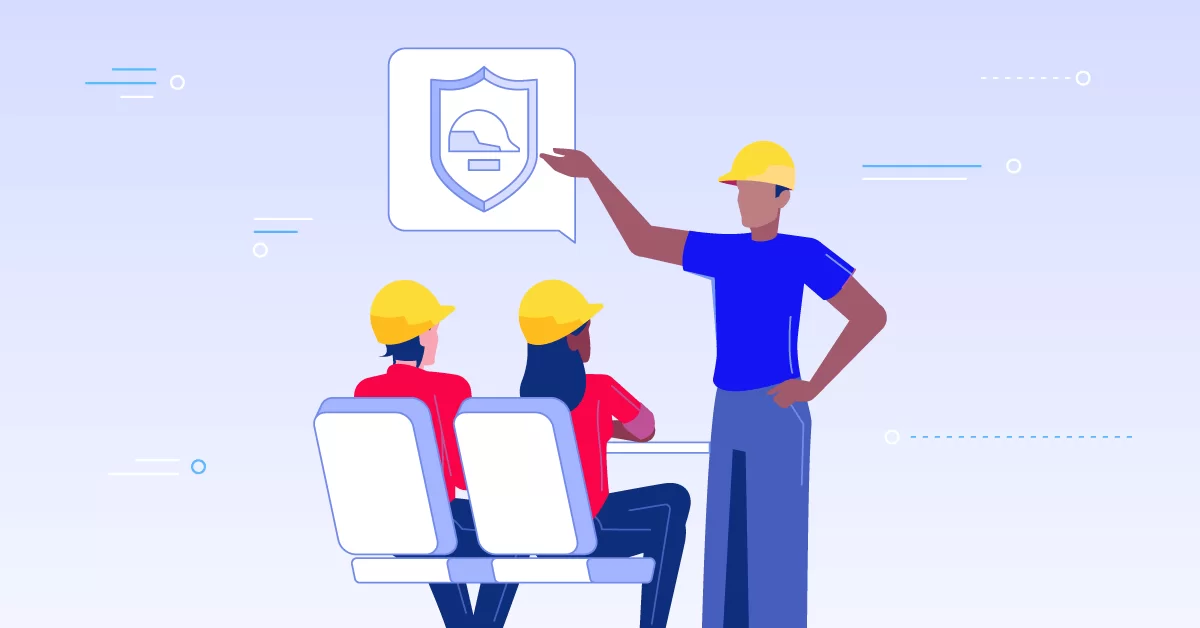Whether it is providing corporate technical training to a company’s own employees or training company customers on technical aspects of a specific product or service sold/supported; how the training is structured and delivered plays a key role in how it is received.
Both in-house staff, such as a company Customer Support team, and client personnel, such as an Engineering department that’s using a vendor-supplied software product, look for certain elements being present in their courses. Those elements are what will help them better engage with the technical learning being presented, and will ultimately enable them to become better at what they do. If those aspects aren’t catered to, the time and effort spent in attempting to deliver the skills and competencies to the target audience have been wasted.
The challenge however is:
How do you facilitate technical training in a way that learners embrace it? First, let’s start off by understanding what the term means so that we can put our discussions in the appropriate context. We’ll then look at this kind of training from two perspectives – imparting technical skills for managers and front-line employees in a company and training corporate staff, client-side.
What is technical learning?
What is it all about, and why does it pose different challenges than other types of learning?
Simply put, it is any training that’s targeted towards corporate staff to enable them to initially learn and subsequently enhance mastery of the technical aspects of their jobs. It often focuses on helping employees build core technical skills and competencies relevant to the organization for which they work.
A key distinguishing factor between technical and other forms of training is that most aspects are job-specific, and therefore cannot be easily performed without the appropriate prerequisite technical skill set. On the other hand, non-technical knowledge, such as soft-skills or administrative routines, are often generic in nature and are easily portable from one job to another.
A key factor between technical and other forms of training is that most aspects are job-specific.Share on
There lies the challenge for training managers and course designers!
Because a technical skills course is so focused, it poses serious challenges for eLearning designers to find ways to make the content engaging and interesting. As a result, employees may disengage or “tune out”, defeating the purpose of training.
Two views of technical learning
When dealing with technical training, instructional designers and training managers must look at learners from two prisms. One, from the point of view of training and equipping in-house staff, on the other from the aspect of training customer staff.
Even though the end result is to facilitate technical training for learners, there are certain nuances in the approaches used to make such training more engaging for both audiences.
Focusing On Your Employees
The following techniques may be used to make corporate technical training more exciting for company staff:
1. Linking it to career progression
Even though the thought of suffering through a course might bore employees, demonstrating clear linkages between such training and career progression can motivate staff to stay engaged throughout the course.
One way to do so is for managers to make employees aware (perhaps through proactive “push” communication strategies) of exciting career openings for those who have participated in prerequisite corporate technical skills development initiatives.
2. Relate to real work
When staff appears unmotivated towards certain aspects of corporate technical training, it’s most likely because they often can’t relate what they are learning to the tasks they routinely perform in their work environment. One way to get learners engaged in developing their technical prowess is to demonstrate how this can positively impact the real work they do.
To implement this strategy, an engine manufacturer could first teach their employees how to use complex engine calibration software; then take them onto the shop floor and demonstrate the negative impact non-calibration (or poor calibration) can have on the vehicle that the engine goes into.
3. Encourage customization
Often, when a specific technical skills course is forced upon an employee, they may not embrace it with eagerness. However, if you allow learners to customize their training to any extent possible, it is likely that they will more eagerly engage with the content.
For example, instead of mandating attendance at an 8:00 AM course on the safe handling of chemicals in the laboratory, allow staff the latitude to enhance their technical skills and competencies at a time that’s convenient for them – perhaps during a lunch-and-learn session. Or, if the takeaways from certain courses won’t be applied during the initial years of their career, they should be granted flexibility to enroll in them later on in their careers.
4. Create supplementary informal learning pools
Oftentimes, having staff log on remotely into the corporate training site to learn about murky, challenging concepts might not be the best way to instill knowledge. In such situations, learners may respond better to informal learning sources.
To make this work, why not consider making senior managers, with solid technical experience, available for informal sessions – either during or outside of core business hours. If learning opportunities are highly accessible, the challenges associated with understanding drab technical content can often be overcome.
Focusing On Your Clients
You may find these techniques useful when imparting technical training to client staff:
1. Customize training environments
Learners respond better when receiving any type of training in familiar environments. When it comes to technical learning, even if it absolutely must be conducted off-site, offering your customers familiar tools and technology to work with will make them more responsive to the content.
Learners respond better when receiving any type of training in familiar environments.Share on
If the majority of your client’s staff are Android users, teaching them to configure and use your Client Management System software in a non-Android (e.g. iOS, or Windows) training environment, even though the features and functionality work almost identically, may not be the best way for them to acquire new technical knowledge skills.
By eliminating the need to get familiar with a slightly different operating environment, they will be mentally more accepting to picking up the technical aspects of system configuration.
2. Use customer-specific content
While grasping core concepts and principles exposed during technical learning is challenging enough, working with the client’s staff can be more interesting if those principles and concepts are taught using client-specific content.
For instance, instead of teaching staff of an Automobile assembly client how to assemble an engine using your training dataset that relates to assembling an aircraft engine, use an example to build a car engine instead. The latter will be more specific to the technical skill set they are interested in acquiring and will, therefore, make the training more interesting and engaging.
The same approach should be used where, for example, you are training client staff at a Software sales company. Instead of using Use Cases related to selling automobiles, calibrate your course content and examples used to the software industry, so that client staff relates to the nuances of what’s being taught.
General facilitating thoughts
While the above approaches can be tailored to facilitate technical learning for your own employees as well as your client’s, you may also customize them by including a whole range of other tools and methods.
When teaching technical skills for managers, you could include specific content – for instance related to employee appraisals – as part of the training curriculum. Other course participants could act as “employees”, and be subject to appraisals by groups of trainee managers. This approach will make learning specific managerial technical skills in business processes more interesting.
On the other hand, a client’s Customer Support staff undergoing training on software tools may find simulated troubleshooting exercises more beneficial when participating in a technical skills course. You could also assign Merit Badges or Technical Mastery Levels to motivate client staff to more eagerly participate in the training.
The whole idea behind successful technical learning is to make the entire experience more relatable to your audience. Since the subject matter of such courses is not always the fascinating kind, training managers must be open to some of the techniques discussed above, to deliver the technical skill set needed to do well in their jobs.


